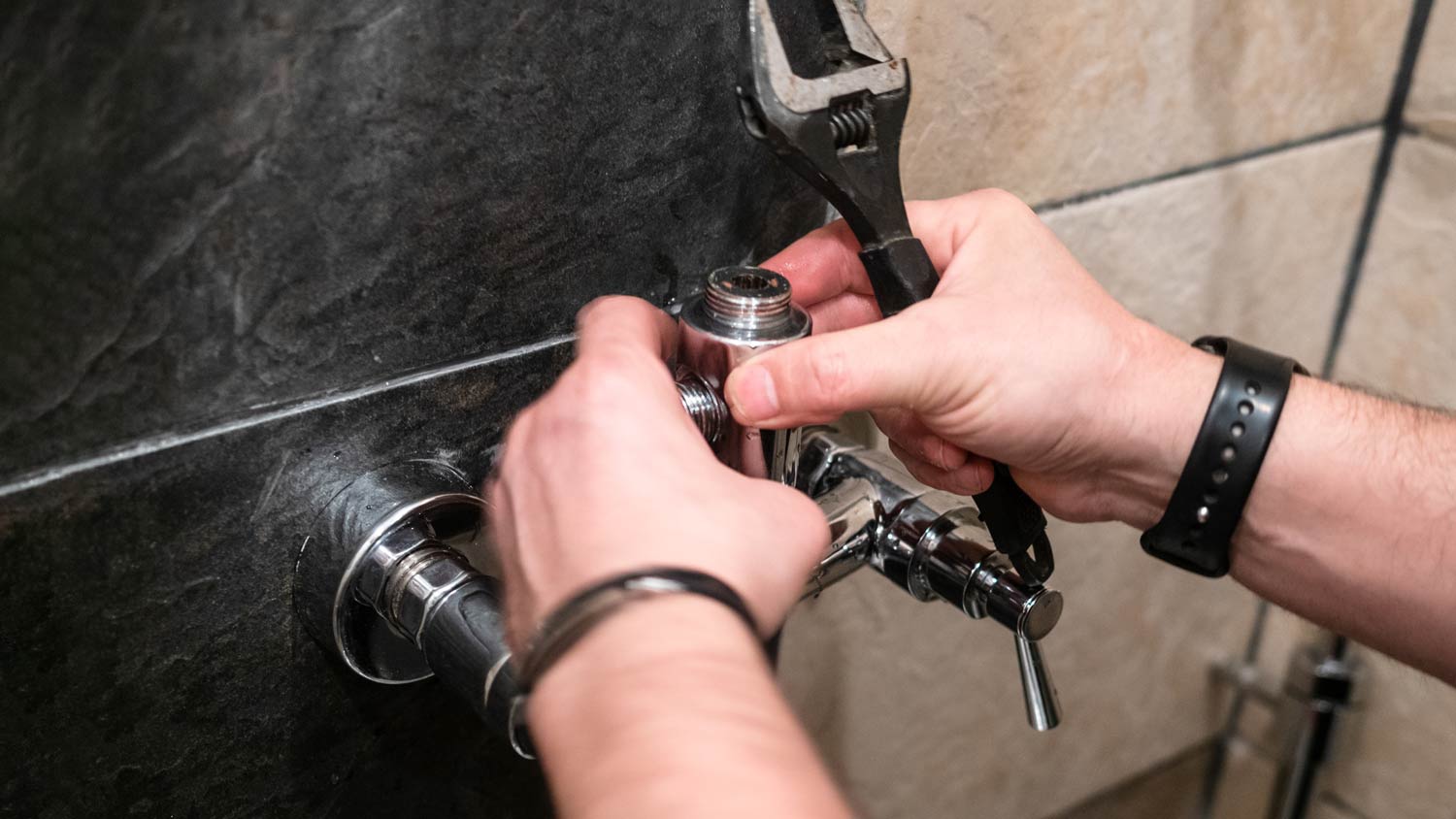What Is a Shower Diverter? Types, Parts, and How They Work
This tiny valve can make it rain


Shower diverters let you swap between your tub, showerhead, and handheld sprayers.
They change the direction of the water flow in your shower’s plumbing.
You can operate a shower diverter with a lever or knob.
Shower diverters are combined with shower valves to create a single unit.
If you have a tub-shower combo, odds are you’re already familiar with shower diverters and don’t even know it. This overlooked component allows you to seamlessly switch between your bathtub and shower (or a rain showerhead and handheld showerhead), giving your space greater functionality. This guide covers what a shower diverter is, types to choose from, and how they work.
What Is a Shower Diverter?

A shower diverter is a tiny valve that diverts the flow of water from one outlet in your shower (like your bathtub faucet) to another outlet (like your showerhead or a handheld sprayer). Your diverter will have a knob or lever to control the direction of the flow of water.
Shower diverters aren’t part of the most basic shower designs, but they’re essential if you have a tub-shower combo, a shower with a handheld sprayer, or any setup where you’d need to switch between different showerheads. If this component breaks, the cost of replacing a shower diverter is around $20 to $200.
How Does a Shower Diverter Work?

A shower diverter is a simple mechanism that redirects water between parts of a shower and bathtub. In a traditional tub-shower combo, water flows out of the bathtub faucet when the valve is open. You can turn or pull a lever to close the valve when you want to take a shower. This will block the flow of water from your bathtub faucet and redirect it up to your showerhead.
In other configurations, the lever redirects water from a showerhead to a handheld sprayer. In more complicated plumbing designs, your diverter will redirect water from a showerhead, to a handheld sprayer, and to a bathtub faucet. Diverters combined with a shower valve control the temperature of water and are sold as a single unit.
Types of Shower Diverters
Shower diverters are a small but mighty piece of your shower plumbing. There are three different types that you’d use in various scenarios:
Three-valve diverter: You’ll use this type of diverter when your tub uses two separate handles to control the hot and cold water. A third central handle, located between the two temperature knobs, serves as the diverter and activates the shower.
Two-valve diverter: This type of diverter is used when your tub has a single handle for controlling the hot and cold water. A second control, a small lever, is located right above or below the handle. Turn this lever to activate the shower.
Single-valve diverter: Also known as a tee diverter, this type of shower diverter is the most basic. It’s commonly located on the tub faucet. Pull up the lever on the faucet to direct the flow of water to the showerhead.
A shower installer can discuss the options with you and help you choose the right shower diverter for your bathroom.
Shower Diverter vs. Shower Valve

Shower valves and diverters are often confused because many modern models combine both elements into a single unit. These two pieces can be connected or integrated, but they’re different parts. In your shower’s plumbing, the water first flows through the shower valve, which changes the temperature and strength of the flow (on, off, strong, or just a trickle). The water then flows through the shower diverter, which changes the direction of the flow.
Your shower valve is connected to the hot and cold water lines. You can control the flow of water with one shower handle (for a single-handle design) or two shower handles (for a double-handle design). When you turn the handle or handles, water flows from the hot and cold lines and into the shower valve. The water combines until it reaches a specific temperature. Then, it flows into the diverter, where it’s directed to your showerhead or faucet.
If you need to install or replace a shower valve, hiring a shower installer near you is a good idea. They’ll know which diverter and valve combination works best with your shower’s plumbing.
Frequently Asked Questions
A shower diverter is not the same as a shower valve, though some modern models combine them into a single unit. A shower diverter directs the flow of water to different areas of your shower—think tub faucet, showerhead, and handheld sprayer. A shower valve controls the temperature of the water and allows you to turn the water on and off.
If your shower diverter is broken, it won’t work properly. You might notice low water pressure in your shower or water leaking out of the tub faucet while running your shower. Additionally, broken diverters are stiff and difficult to operate, and you might hear new popping or clicking noises. If you think your shower diverter is broken, call a shower repair pro near you.





- Bathroom Remodeling
- Kitchen Remodeling
- Shower Installation
- Stair Installers
- Bathtub Installation
- Shower Door Installers
- Kitchen Design
- Bathroom Design Companies
- Storm Shelter Builders
- Pre-Made Cabinets
- Kitchen Refacing
- Bathtub Replacement
- Ceiling Tile Installation
- Suspended Ceiling Companies
- Residential Designers
- Stair Builders
- Remodel Designers
- Shower Enclosures
- Home Renovations
- Kitchen Renovations
- Garage Remodeling
- Grab Bar Installation
- Walk-In Tub Installers
- Tub to Shower Conversion
- Balcony Contractors










